Signs of the bottom
Nearly a year ago now, Marcus Padley penned a piece outlining some of the signs of the top. That was nearing the end of August - which should have sounded the death knell for investors as since then the market has continued to cascade downwards, while individual stocks have suffered far, far worse.
For example, Magellan Financial Group, which for well-publicised reasons has had a shocking 12 months, has seen its share price fall nearly 75%. While names like Boral (-62.53%), Air New Zealand (-60.42%), Platinum Asset Management (-57.14%), Codan (-52.70%), St Barbara (-52.65%) and Megaport (-49.24%) have similarly suffered over the past 12 months.
The herd runs for the hills...
It seems dismal sentiment among investors has also taken its toll during tumultuous 2022. In fact, according to research house Calastone, investors withdrew more than $2 billion from Australian managed funds in the June quarter.
For some context, in the third quarter of 2021 (when markets peaked) investors ploughed a whopping $15.7 billion into Australian managed funds.
So much for being fearful when others are greedy, and greedy when others are fearful.
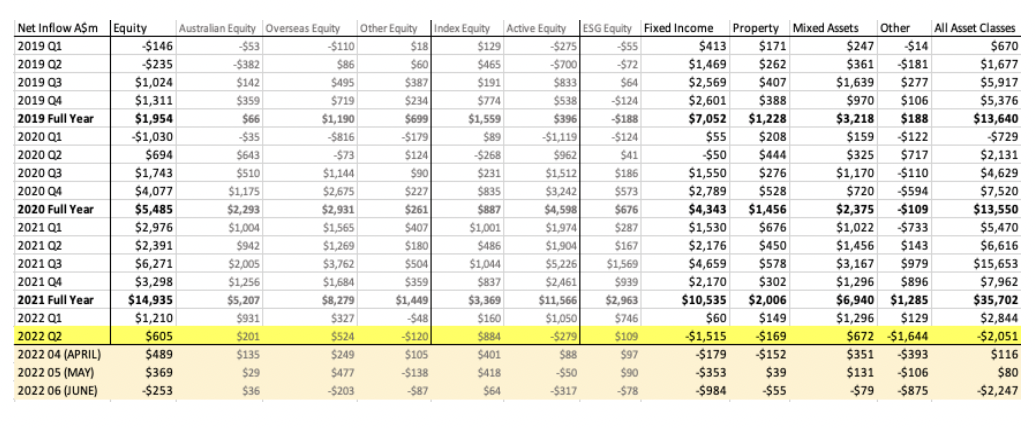
... As do the world's fund managers
It comes as the Bank of America releases its monthly survey of global fund managers - which found that funds were in "full capitulation", with equity allocations falling to levels last seen in the 2008 Global Financial Crisis.
The survey also indicated that BofA's "Bull/Bear" indicator had reached "max bearish". Meanwhile, it also found that average uninvested cash levels have risen to above 6% - the highest in two decades. In addition, in a recent note, Bell Potter's Richard "Coppo" Coppleson said that US equity funds are currently sitting on a cash pile of $209 billion (see below). Anecdotally, I recently saw an Aussie-based fund with a cash allocation of 50%.
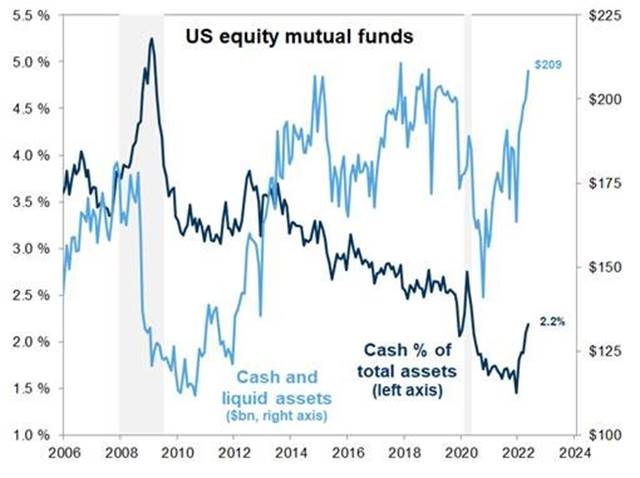
Meanwhile, a leading indicator makes its move... South that is
Interestingly, the Coppock Indicator - which can help investors know when to buy long-term holdings at the lows of a bear market (and measures changes in the speed of price change in the stock market) - recently went negative on the S&P/ASX All Ordinaries. (see below)
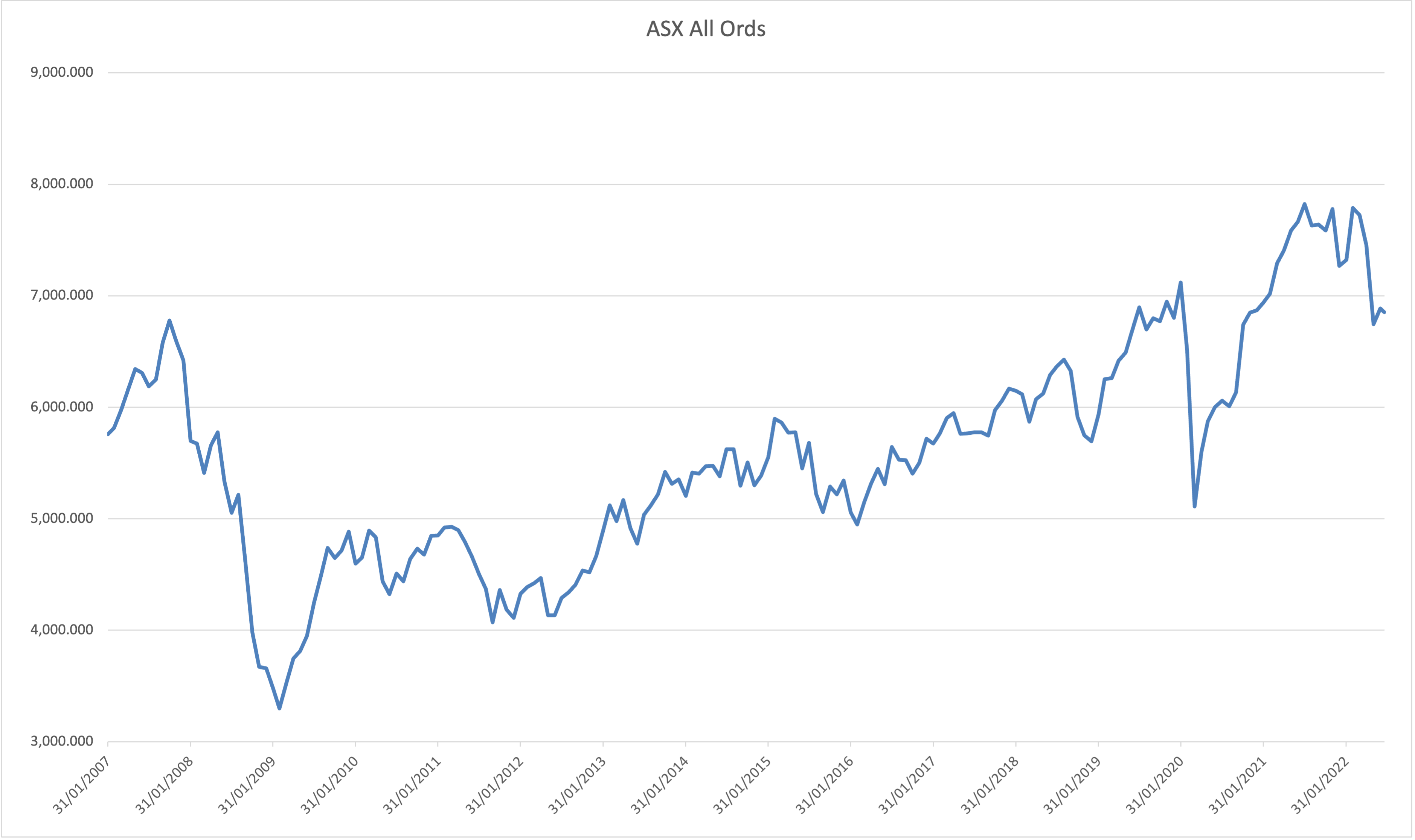.png)
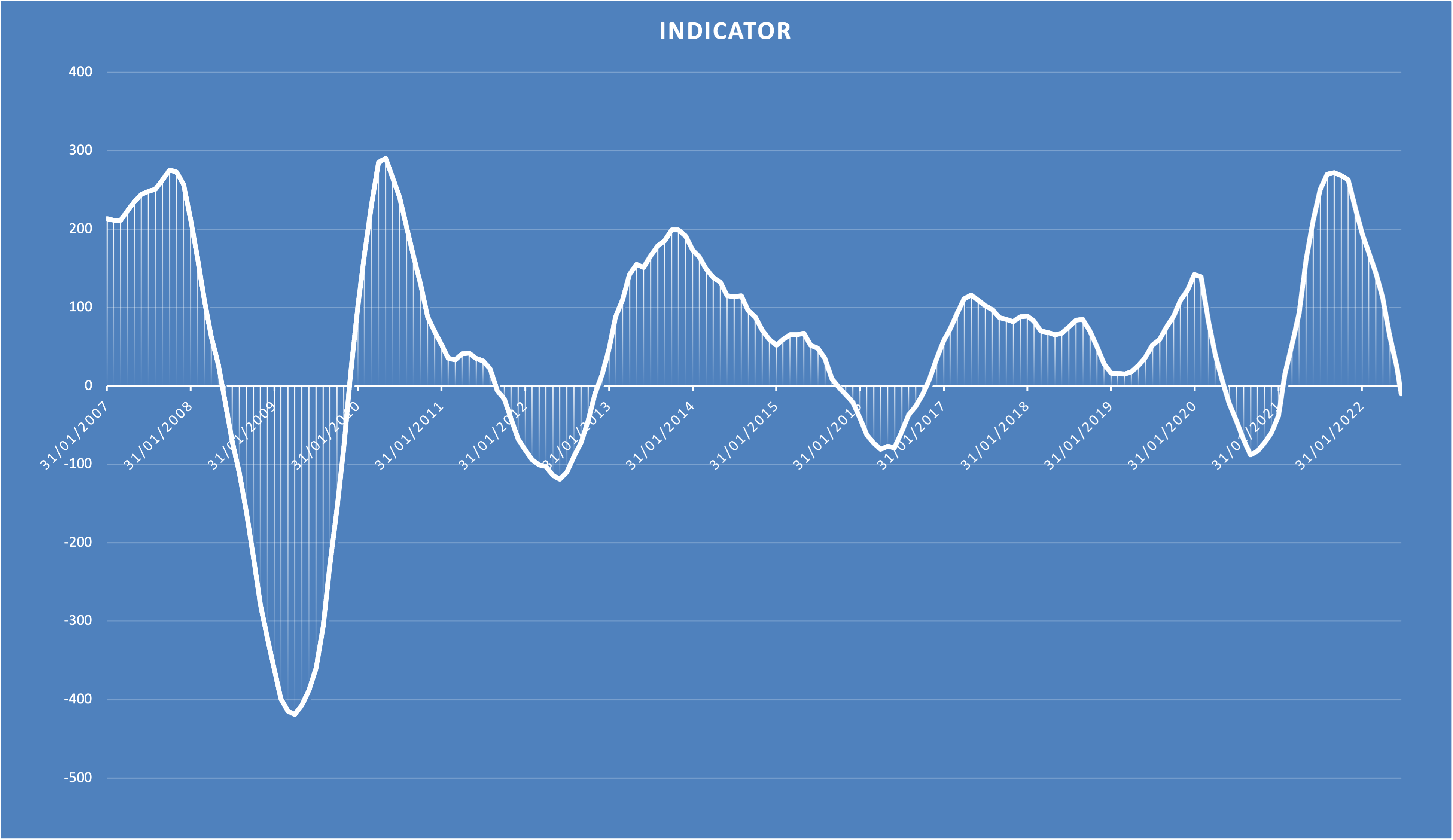
Now that it has sunk below zero, investors can use the Coppock Indicator as a reasonably strong signal to know when to start buying - that is, when it starts to lift again. It's not always accurate - it can often be either a few months earlier or a few months later than the exact bottom - but it can help investors identify a lower-risk time to start buying.
So could a turnaround be on the cards a few weeks (or months) from now?
While trying to time the market bottom could only be akin to trying to catch a falling knife (and a machete at that), we thought we would gather the Livewire troops to see what they believe to be clear signs of the bottom, so investors can know when to jump back in.
Have your say
If you think of any other signs of the bottom, please let your creative juices flow in the comments section below and we will add them to this list.
Unofficial signs of the bottom:
- Investors are doing the exact opposite of every famous Warren Buffett quote.
- The fund that shorts Cathie Wood's ARKK ETF (the Tuttle Capital Short Innovation ETF (NASDAQ: SARK)) has fallen nearly 15% over the past month.
-
Bronte Capital founder John Hempton is doing interviews with the AFR again.
- Everyone thinks we are headed for a US recession (see below):
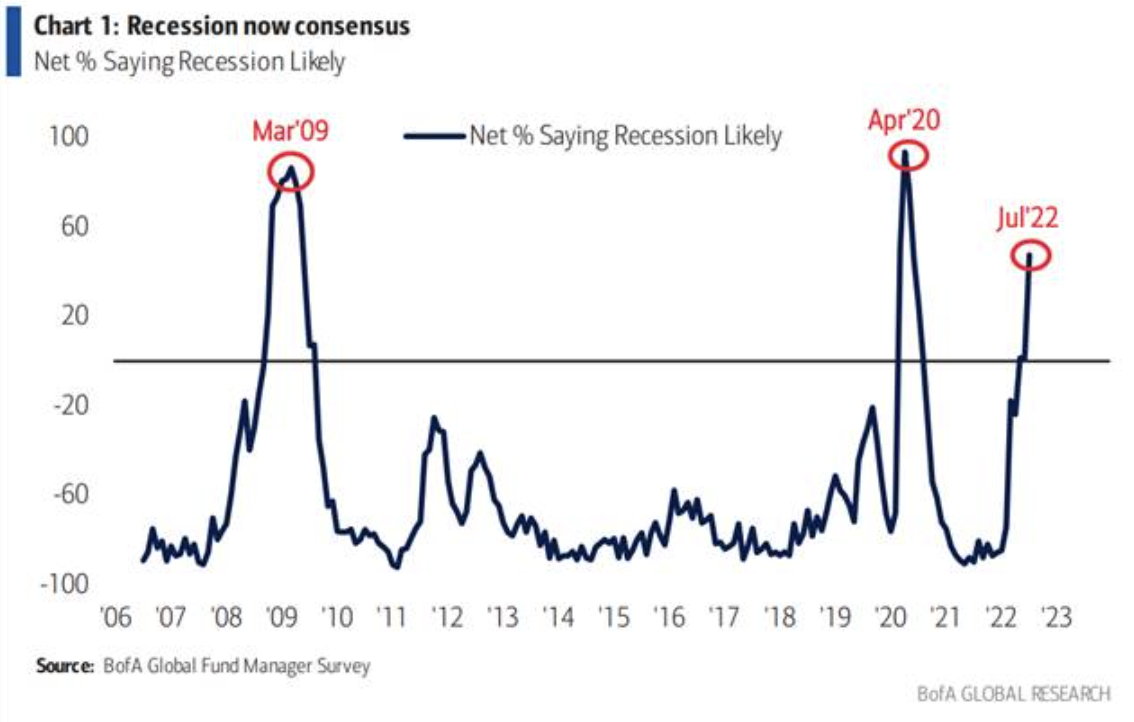
- Long/short funds have overtaken value managers as the top performers.
- A fund manager recently told me that he couldn't recall "another time when there have been so many small caps as heavily shorted as they are now."
- Likewise, hedge funds are shorting the market en masse - back to levels seen in March 2020. (see below)
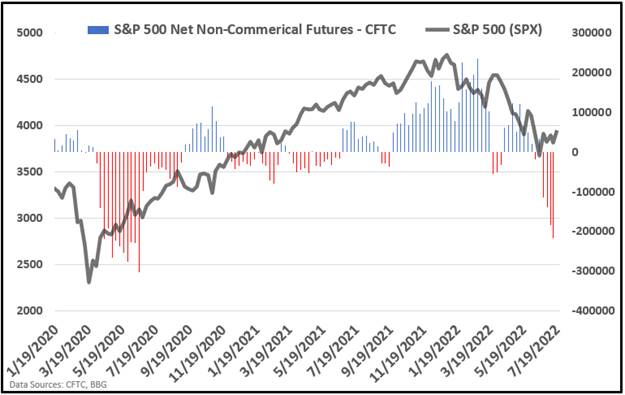
- Everyone and their neighbour keeps calling for a cataclysmic property market crash.
- I went to a media lunch this week, and the finance exec next to me said that he couldn't remember the last time he had an AFD (alcohol-free day).

- I recently went to Europe and got to meet my partner's family in Wales. His sister's boyfriend works for Mercedes and has been working as a car salesman for a very long time. He shared that he had never seen this many potential customers get their finance knocked back.
- I don't fill up my car's tank all the way to full anymore.
- There was a huge amount of short covering yesterday, with the 30 most-shorted stocks up 4.75% (compared to the S&P/ASX 200's 1.65%).
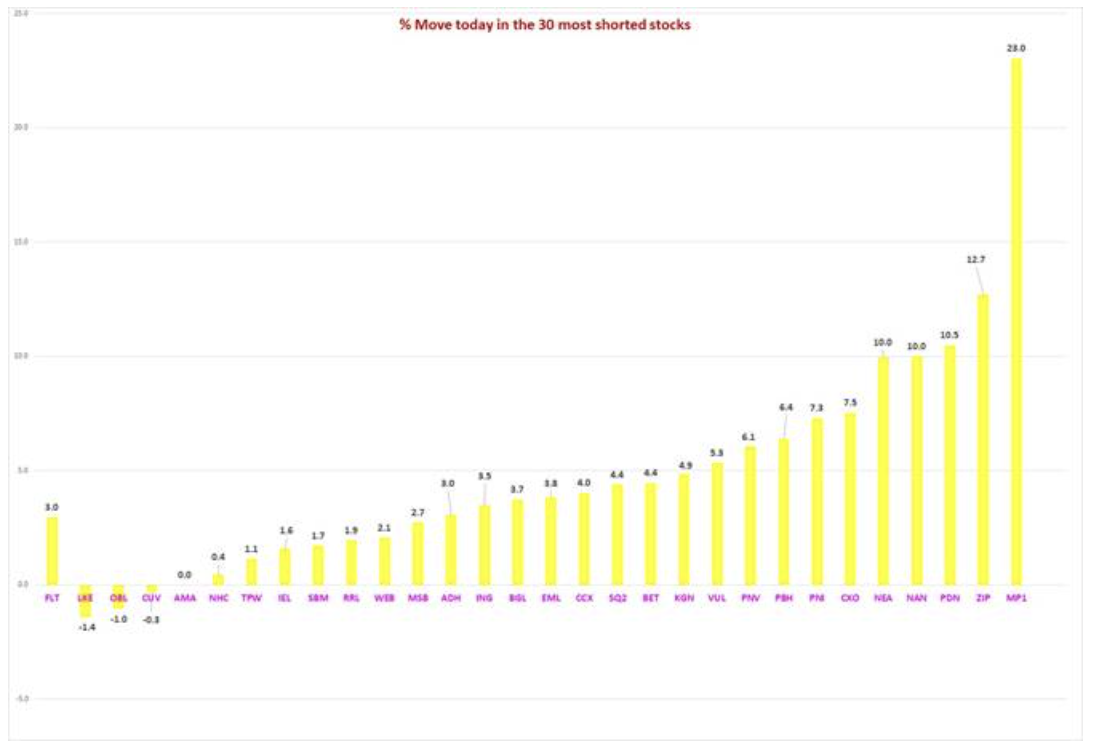
- Elon Musk converts 75% of his Bitcoin purchases into fiat currency to bolster Tesla's balance sheet. Since the beginning of the year, the price of Bitcoin has fallen 48.4%.

- The NASDAQ and the S&P 500 break back up above 50-day moving averages. The S&P 500 has finally done it after 62 consecutive days of trading below it - this has not happened since GFC.
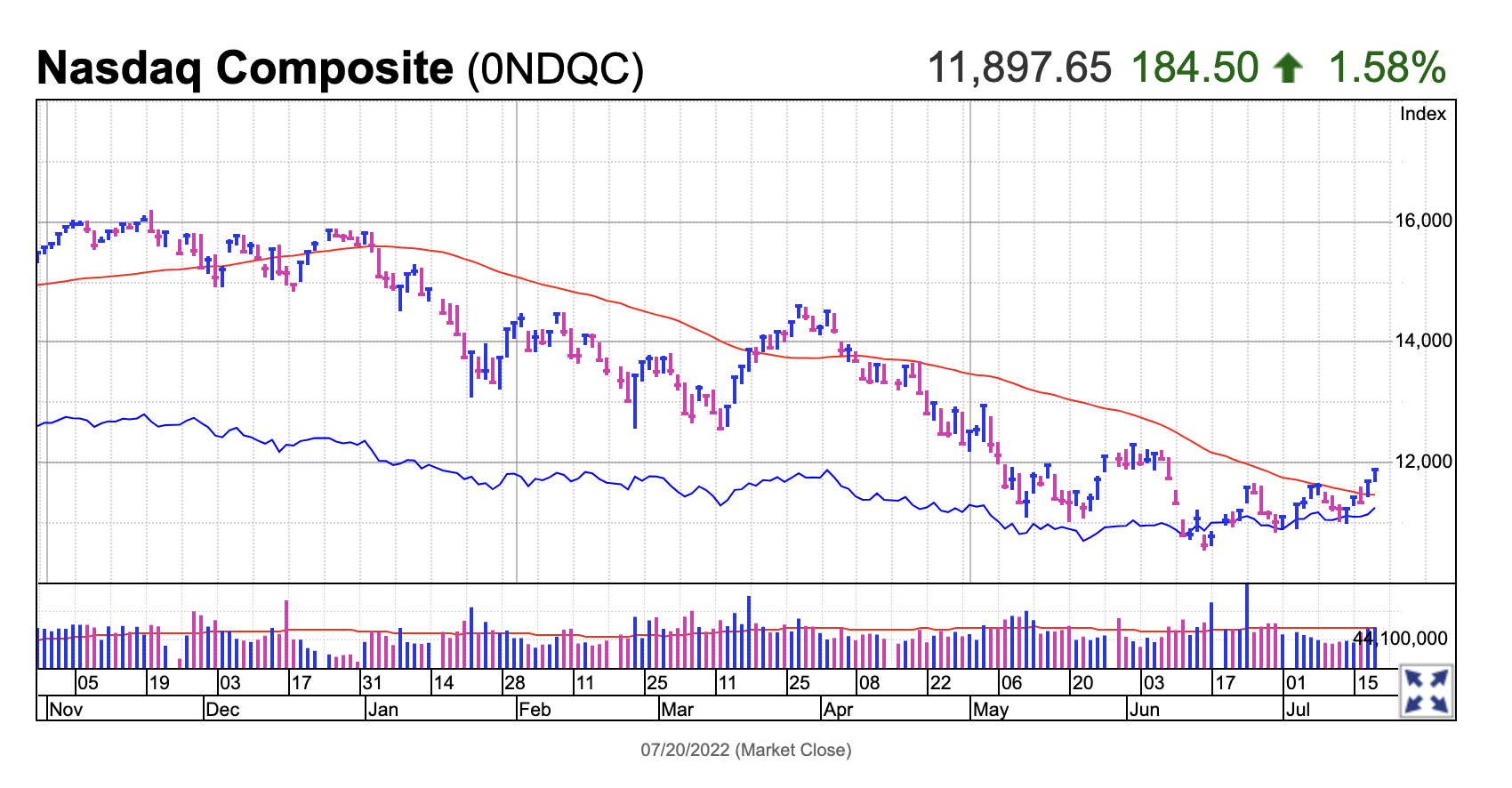
- The 15-day and 30-day moving averages chart for the S&P/ASX 200 shows that the two averages are now touching (see chart below). According to Coppo, if the 15-day moving average crosses back above the 30-day moving average next week, that will trigger Commodity Trading Advisors (CTAs) to cover shorts and go long. Back in June, CTAs were very short - and if markets continue to rally through July, they will be forced to cover their shorts (approximately US$100 billion worldwide and $6 billion on the SPI).
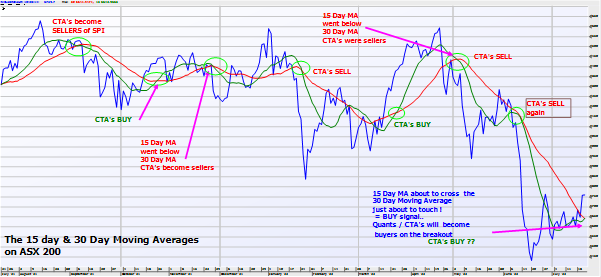
- Sebastian's sign: History rarely repeats but it often rhymes. In every fall of 20%-plus since WWII in the S&P 500 in the US, the bounce-back from the bottom was double-digits. Also, once the losses were recouped, the 12 months after that were also positive in 10 of 11 instances, and in only one of those 10 instances was the bounce-back not double-digits.
- DG's sign: Lots of positive signs coming out of the US, including Biden's impotence on oil and everything else related to the economy.
- Ben's sign: One bearish signal I have picked up - I haven't seen a rocket emoji in any of the ASX small-cap Facebook groups I follow for at least three months.
- John's signs: Currently I've gone from bearish to mildly bullish. The buy the dip mentality still seems to pervade. The S&P 500 (weekly) indicators are turning up. The Fed hikes seem to be indicating that they might have done enough in the short term to tame inflation. The US market seems to be taking the rate hikes in its stride. The US economy doesn't yet seem to be on its knees. Unemployment doesn't seem to be an issue at the moment but it's still the economy v inflation. Dow Jones Transport Index still seems to be in a bullish uptrend. Dr. Copper seems as though it may have bottomed.
- Stephen's sign: I think the chances are we have seen the bottom because the S&P 500 has crossed the 50-day moving average and the Australian market is very close to doing the same. This happened in 2020 after the 33% fall in the market and the index rose straight up. It also happened in 2018 and the Index rose straight up. The S&P 500 has suffered its biggest first-half loss since 1962; that is 60 years. In every loss of 15% or more over the first half since the 1930s, the US market has had a strong recovery in the second half. Every time.
- Daniel's sign: World's biggest economy (and opinion leader) shows it can be rational by acknowledging facts as facts - Jan 6 Committee highlights the extent of the 'Big Lie' and systemic treason so the US is less likely to implode due to social/civil unrest. A democratic refresh via young votes in Nov midterms to provide political and therefore economic stability
- Jon's sign: Figures continue to show consumer demand is still at record levels, despite rate hikes. As long as everyone is in a job (some are in 2 !), this rampant government-backed consumerism and stock speculating will continue. This means the fundamentals for most Aussie companies that don't deal in the very highest end discretionary spends, given that caveat above on jobs, will have rosy forward estimates. For the market to take the true correction we've all been predicting for what seems like a decade, something else (jobs) has got to give. So yes, the market is more upside than down, given that status quo. And so it doesn't matter if this is a bottom or not of a tiny dip, because this isn't the big one that will shake the actual foundations. Just a blip...
Actual signs of the bottom:
- When the Coppock Indicator turns.
- When we see more dovish monetary policy again (although quite a few fund managers and economists are already talking about rate cuts - yes CUTS - in 2023).
- When we see a spike in the VIX - in March 2020 the S&P/ASX200 VIX lifted to around 44.3. Right now, it's at 16.73. The VIX for the S&P 500 is currently at 24. However, this could suggest that the bears calling for another 30% drop in markets may not see the drop they are after.
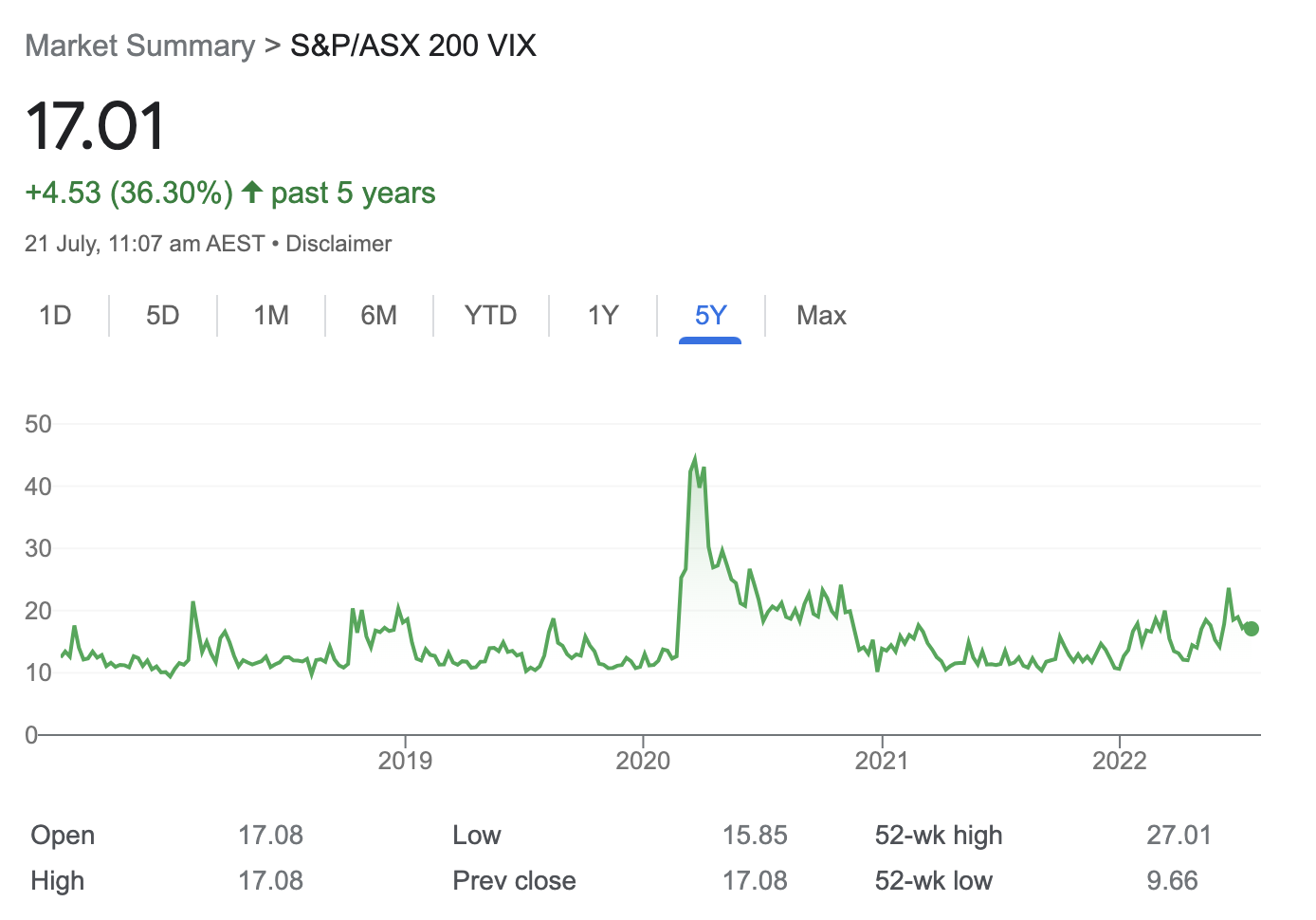
- When put options outnumber calls - right now, the CBOE Total Put/Call ratio is sitting at 0.93. A ratio greater than 0.7 usually indicates that investors are bearish - so are either speculating that the market will move lower or are hedging their positions. A Total Put/Call ratio between 0.7 and 0.5 is considered bullish.
- A low number of stocks trading above their 200-day moving averages.
- Poor investor sentiment (we are already seeing this with BofA's "Bull/Bear" indicator at "max bearish" (see below) and investors pulling $2 billion out of Australian managed funds)
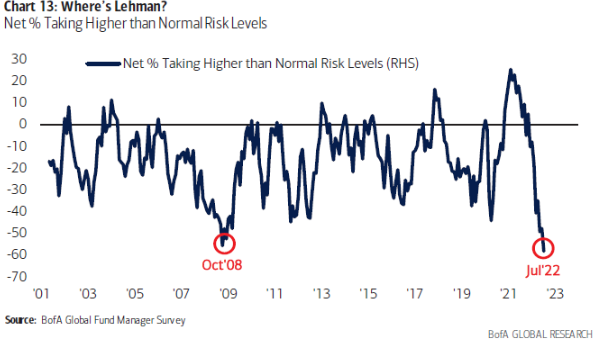
And how a pro is navigating this bear market

While a bear market is obviously very tricky to navigate, it can be done, Bell Potter's Richard "Coppo" Coppleson penned in a recent note.
"It's just not as easy as it is in a bull market (where you just go long everything and look like a hero as the tide lifts all boats)," he said.
"A bear market is far more interest than a bull market and I find it more like a game of chess - you have to be tactical to survive and play the long game and there are always so many expected moves that tend to come from nowhere."
Having witnessed many a bear market, Coppo warns that they are very rarely over in a hurry (other than March 2020, of course).
"You just need patience and need to watch so many different factors that I have found hugely helpful in finding when the lows have been seen," he said.
These include investor confidence, trading volumes and certain economic numbers - like peak inflation, the timing of the last rate hike, and trying to determine when the first rate cut could be - as in the past five rate hike cycles, the first rate cut was 10 months later, he said.
Right now, it's still a waiting game, Coppo said.
"An observation is that a bull market tends to run for three years and the ensuing bear market runs for 9 months. If the bull market was 6 years, then it's an 18-month bear market," he said.
"(This is) only a rough rule, but it's not too bad to keep in the back of your mind. So for now, I still see this as a bear market rally.
"Some are saying that (the market) has bottomed, as the US will not go into a recession. I hope they are right, and they could well be right - but with US rates going up and inflation still raging the chances the US goes into a recession is estimated to be at 30%."
What do you think?
If you think of any other signs of the bottom, please let your creative juices flow in the comments section below and we will add them to this list.
Never miss an update
Enjoy this wire? Hit the 'like' button to let us know. Stay up to date with my content by hitting the 'follow' button below and you'll be notified every time I post a wire.
Not already a Livewire member? Sign up today to get free access to investment ideas and strategies from Australia’s leading investors.
3 topics
7 stocks mentioned
2 contributors mentioned

